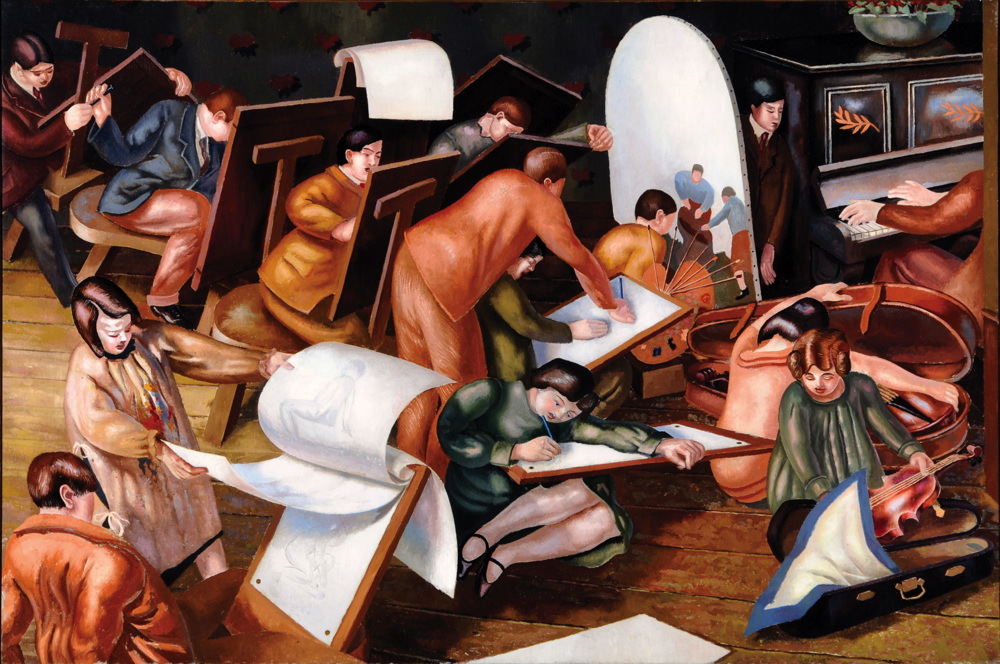Although often described as one of Britain’s best-loved painters, it is 15 years since Stanley Spencer has had an exhibition of the depth and magnitude of Of Angels And Dirt. During that time there have been shows dedicated to his experiences during the First World War and others looking at his landscapes. But the Hepworth Wakefield is set to combine every aspect of his broad canon, from sketchbooks when he was 16 to his penultimate portrait in 1959 – the year of his death – promising a retrospective view of a fascinating man.
“What’s so interesting about Spencer is how he connected different parts of his practice, combining war themes with domesticity, for example,” explains curator Eleanor Clayton. “The point of the show is to move away from neat, tidy packages of his work and show what a complicated artist he really was. The way he mixed subjects within a painting many would regard as conflicting – leisure and industry, religion and sex. They really reflect his world views, which obviously affected his personal life. Spencer was aware of this and the way he saw connections between everything put him artistically ahead of his time.”
Key paintings in Of Angels And Dirt include four of the vast Shipbuilding On The Clyde series, painted in 1940 and dramatically combining a sense of spirituality with the ritual of physical work. There are also two portraits, including one nude, of Patricia Preece, a pivotal figure in Spencer’s life. During the mid-1930s Spencer, then married, began to court Preece despite her being an out lesbian and married her a week after his decree absolute from Hilda Carline. Preece began to handle Spencer’s business affairs, he signed the deeds of his house over to her and, according to Clayton, “subsequently spent a lot of money on her.”
“He said he met Preece at a time when he was starting to feel this need to bring together the religious and the sexual, and this new relationship really did have an impact on his painting in terms of technique. I’ve heard his work described as ‘the soap opera of British Modernism’ and that’s mostly because of the nudes he painted of Preece – nudes that were quite scandalous because of the detail and lack of idealisation. It’s quite obvious that they went on to influence Bacon and Freud in the 1950s.”
Alongside Spencer’s always dramatic paintings, the exhibition will showcase many of the explanatory notes he penned to accompany his work. In contrast to many artists, Spencer was at pains to explain the meaning behind his canvases.
“His descriptions are very long and rambling but absolutely fantastic,” says Clayton. “He’s really saying that it’s not just about the artwork but also important that he communicates in another way to his public.
“One of his friends did say he should leave the writing of his work to the critics and he replied that if he was going to do that he’d leave the painting of his work to the critics as well. To him it was two sides to the same thing.”
Stanley Spencer: Of Angels And Dirt is at the Hepworth, Wakefield, until 5 October
Like the Big Issue North on Facebook



Leave a reply
Your email address will not be published.